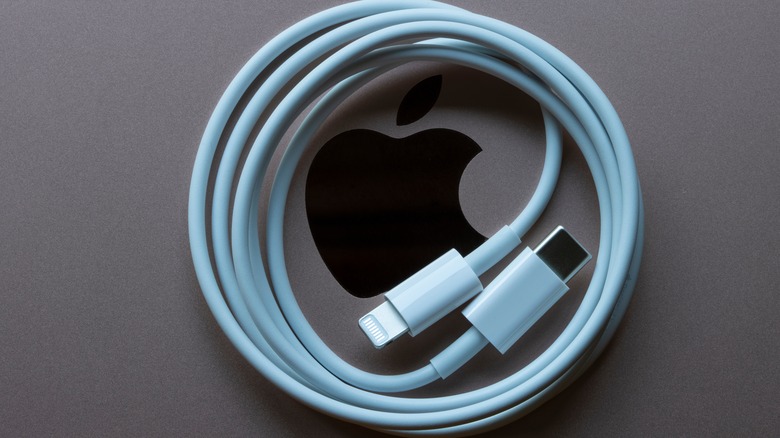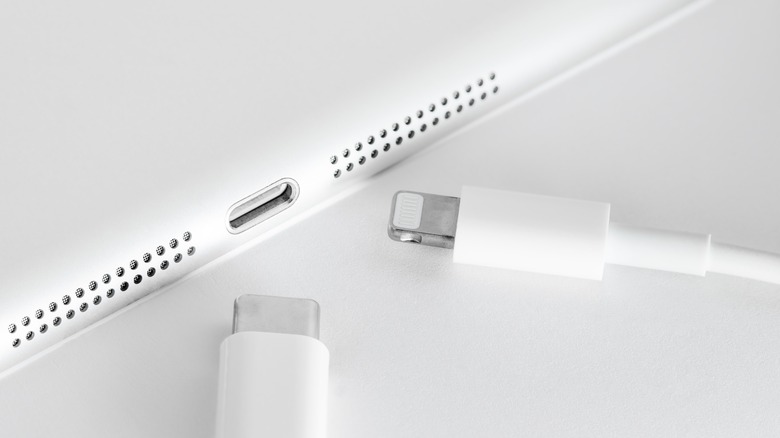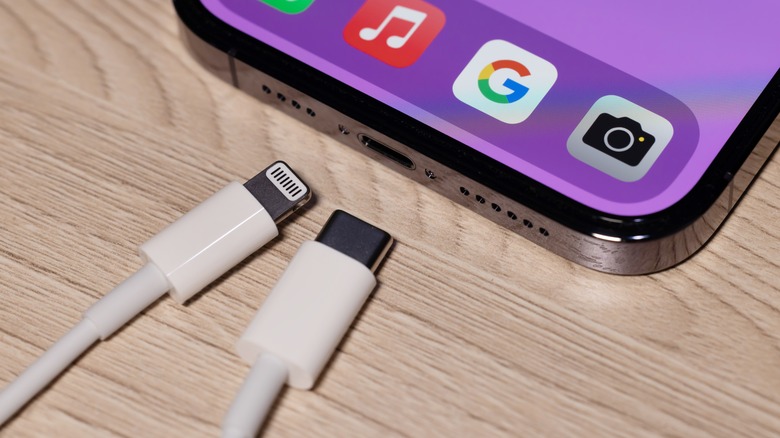We may receive a commission on purchases made from links.
The path forward often involves sacrifices, and this quest for ingenuity couldn’t be truer when discussing consumer tech. If you’ve owned an Apple device at any point over the last decade or so, we’re betting you’ve got one or a hundred Lightning cables lying around. When Apple “sacrificed” its proprietary Lightning connector in favor of USB-C, this left iOS devotees and other long-standing Apple consumers with a wire type the company no longer stood behind.
This begs the question: What exactly can you do with all your old Lightning cables? Fortunately, if you’re still using an iPhone 14 or older, your iOS hardware requires the Lightning connector. But what if you’re rocking an iPhone 15 or a brand-new iPad, and you genuinely don’t need all those Lightning cables haunting your halls? Luckily, there are still a few ways you can make the most of this soon-to-be-vintage Apple connection. Let’s take a closer look.
Recycle, reuse, and adapt your tech
Tossing your old cables in the regular garbage is one of the worst things you can do for Mother Earth. Not only does this add to the never-ending piles of e-waste, but it prevents recycling plants from being able to reuse the raw materials stashed inside your Lightning cables, including copper and aluminum. Plus, the longer these unused cables sit in landfills, the greater the risk is of the wires leaking toxic chemicals into groundwater, soil, and other parts of the environment.
This is why it pays to recycle or trade in those Lightning cables the right way, even if it involves more than just tossing them in the trash. If you live near a Best Buy, Staples, or other brick-and-mortar bastion, there’s a decent chance the store has some kind of recycling depot or throwaway bin for items like old wires, batteries, cell phones, and other small tech. Some companies — including Apple — even offer mail-in recycling programs. Why ditch all of your Lightning port tech if you can still use it? Products like this official Apple USB-C to Lightning Adapter let you hook up your existing Lightning accessories to newer iPhones and iPads with USB-C. You’ll also be able to find Lightning caps that complete the A to B handshake between USB-C accessories and your older Apple devices, like the USB C Type C to Lightning Adapter MFi on Amazon.
One thing to keep in mind: It pays to stick with first-party Apple adapters or MFi (Made for iPhone) certified tech whenever possible. Cheaper adapter products made by unrecognizable companies may not work all that well, or might quickly degrade in quality. So you may want to think twice about buying third-party accessories. Spend the extra $20 upfront. You’ll thank yourself later.
Donate, gift, or repurpose your Lightning cables
Even if you’ve upgraded to a newer iPhone or iPad with USB-C, there are still plenty of individuals using older Apple devices with Lightning ports. So, if you’re not interested in recycling or adapters, why not just give your old Lightning cables away? Beyond friends and family, there are plenty of schools, community centers, and organizations that would probably be glad to take your older Apple accessories.
Services like the Freecycle Network are great for finding folks in need of electronic hardware and add-ons, as is Facebook’s Buy Nothing initiative, Craigslist, Nextdoor, and similar platforms. You could also pop into your local Goodwill or Salvation Army to see if they’re accepting donations for these types of products. Should you own a stockpile of older wires and accessories, you could even try bundling several together to sell on eBay or Facebook Marketplace. Services like VarageSale and DeCluttr are great options, too.
Your old Lightning cables are just dying to take part in a science experiment or two. If you’re the tinkering type, the outer sheathing of most Lightning wires can be removed and repurposed. You could potentially turn smaller sections of cord cover into lassoes for other cables, or plant ties for supporting some of the greenery in your home. For the ever-more daring amongst us, you could even use the copper lining inside of Lightning cables for low-voltage creations like DIY LED lighting kits, or new circuitry for a Raspberry Pi. Just because Apple decided it was the end of an era doesn’t mean we legacy device owners have to follow suit. And when you’ve personally decided it’s time to ditch your Lightning tech, we hope this guide has taught you that you have plenty of options.





